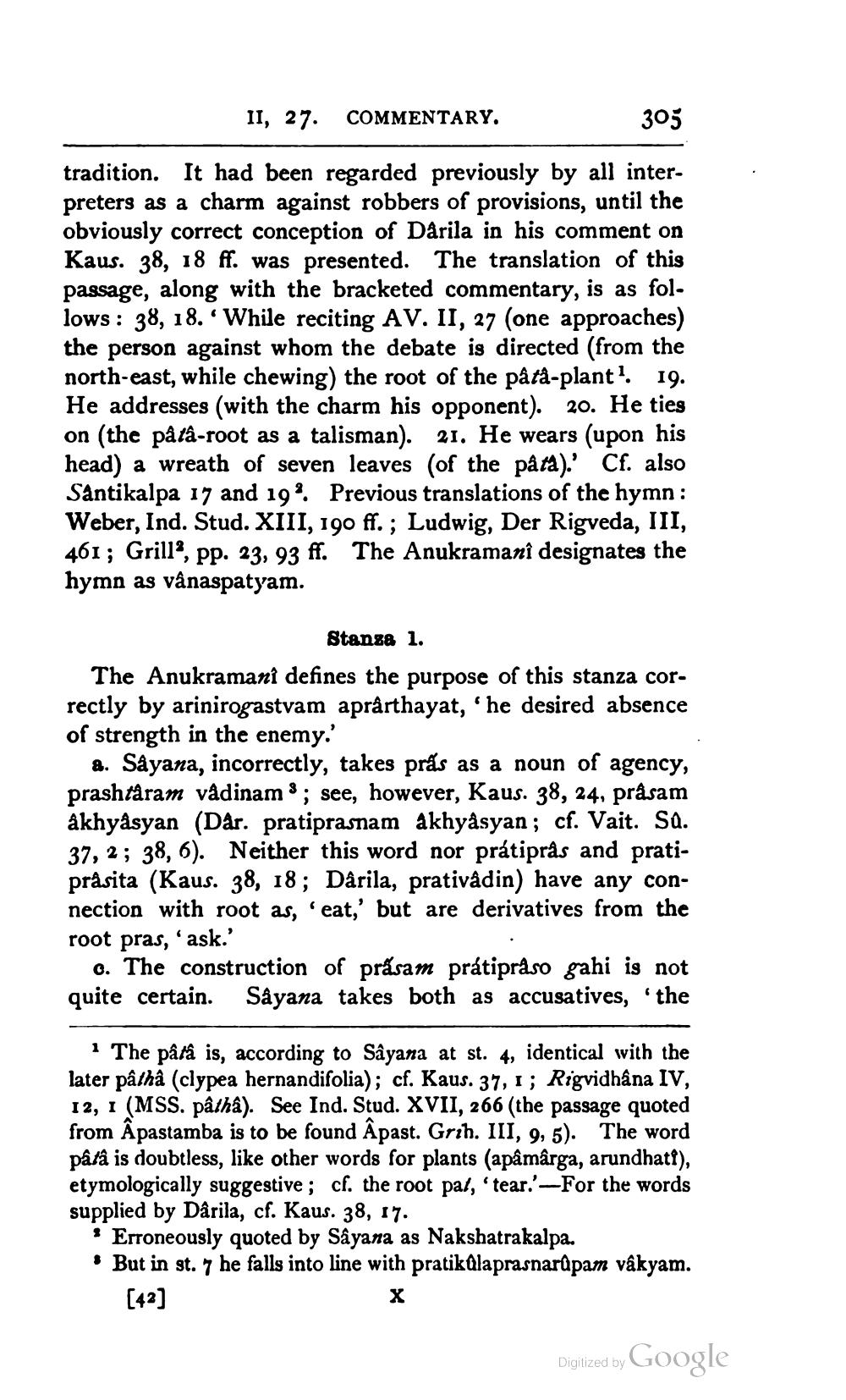________________
II, 27. COMMENTARY.
303
tradition. It had been regarded previously by all interpreters as a charm against robbers of provisions, until the obviously correct conception of Dårila in his comment on Kaus. 38, 18 ff. was presented. The translation of this passage, along with the bracketed commentary, is as follows: 38, 18. While reciting AV. II, 27 (one approaches) the person against whom the debate is directed (from the north-east, while chewing) the root of the pâtà-plant?. 19. He addresses (with the charm his opponent). 20. He ties on (the påtâ-root as a talisman). 21. He wears (upon his head) a wreath of seven leaves of the påta).' Cf. also Santikalpa 17 and 19. Previous translations of the hymn: Weber, Ind. Stud. XIII, 190 ff. ; Ludwig, Der Rigveda, III, 461; Grill', pp. 23, 93 ff. The Anukramanî designates the hymn as vânaspatyam.
Stanga 1. The Anukramani defines the purpose of this stanza correctly by arinirogastvam aprarthayat, 'he desired absence of strength in the enemy.
a. Sâyana, incorrectly, takes präs as a noun of agency, prashtàram vadinamS; see, however, Kaus. 38, 24, prâsam åkhyasyan (Dar. pratiprasnam akhyåsyan; cf. Vait. Sa. 37, 2; 38, 6). Neither this word nor prátiprås and pratiprasita (Kaus. 38, 18; Darila, prativadin) have any connection with root as, 'eat,' but are derivatives from the root pras, ask.
6. The construction of prásam prátipraso gahi is not quite certain. Sayana takes both as accusatives, the
The pâtâ is, according to Sâyana at st. 4, identical with the later pâthà (clypea hernandifolia); cf. Kaus. 37, 1; Rigvidhâna IV, 12, 1 (MSS. pâthâ). See Ind. Stud. XVII, 266 (the passage quoted from Âpastamba is to be found Âpast. Grih. III, 9, 5). The word pâtâ is doubtless, like other words for plants (apâ mârga, arundhati), etymologically suggestive; cf. the root pat, tear.'-For the words supplied by Dârila, cf. Kaus. 38, 17.
· Erroneously quoted by Sâyana as Nakshatrakalpa. . But in st. 7 he falls into line with pratikülaprasnarūpam vâkyam.
[42]
Digized by Google




